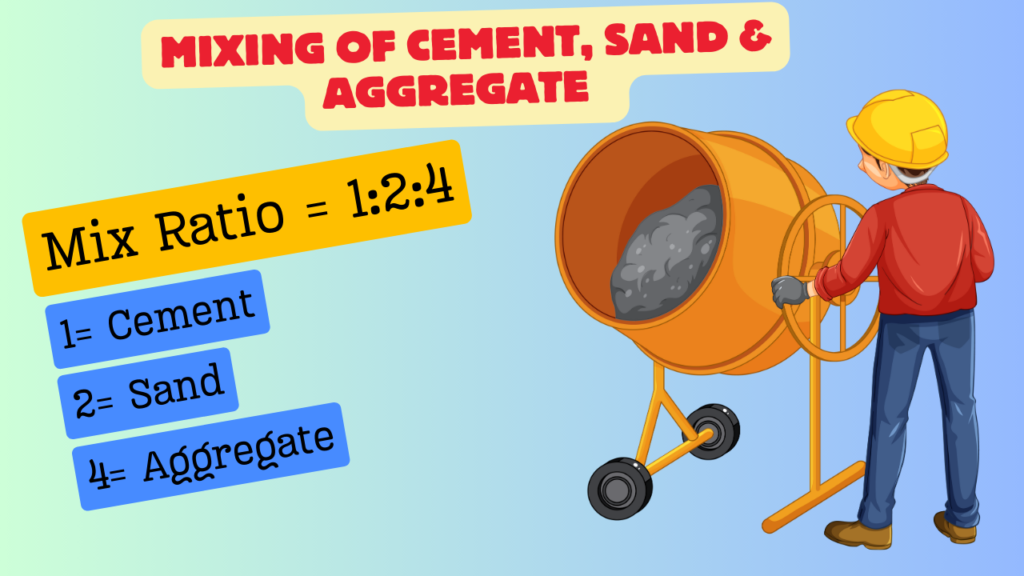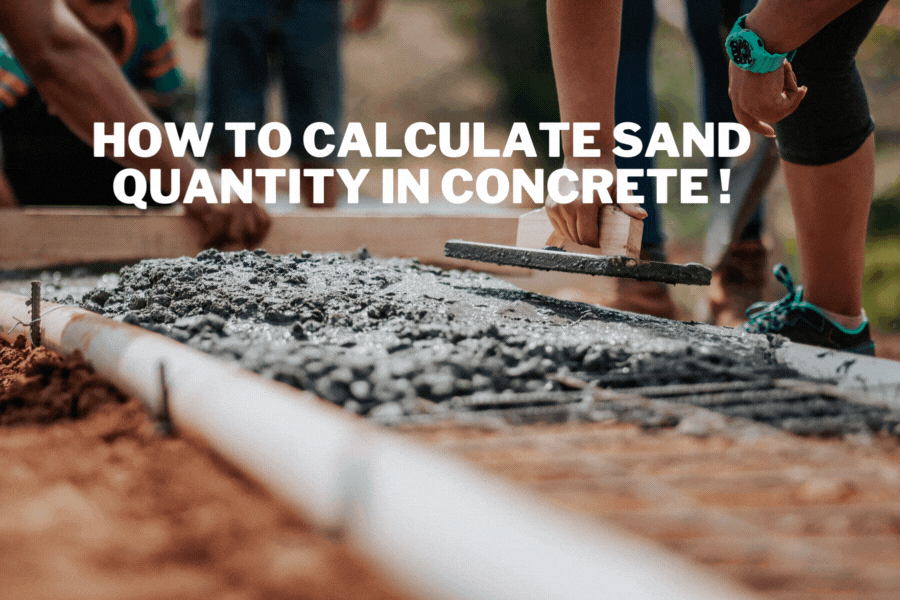How to Calculate Sand Quantity
Table of Contents
A. How to Calculate Sand Quantity
Calculating the quantity of sand required for a construction project involves determining the volume of sand needed based on the dimensions of the area you want to fill or cover. Here’s how you can calculate the sand quantity in cubic meters (m³):
Step 1: Determine the Volume of the Area to be Filled or Covered
Example: Calculating the sand quantity for a rectangular area (such as a sandbox or a foundation bed).
- Measure the Dimensions:
- Length (L) = 4 meters
- Width (W) = 2 meters
- Depth (D) = 0.3 meters (assuming the depth of sand needed)
- Calculate Volume:
- Volume = Length × Width × Depth
- Volume = 4 m × 2 m × 0.3 m = 2.4 m³
Step 2: Consider the Bulk Density of Sand
The bulk density of sand (loose and dry) is typically around 1.6 to 1.7 tons per cubic meter (t/m³) or 1600 to 1700 kilograms per cubic meter (kg/m³). To convert the volume from cubic meters to tons, use the bulk density:
Bulk Density of Sand: \(1.7 \, \text{t/m}^3\) (or \(1700 \, \text{kg/m}^3\))
Step 3: Calculate the Total Sand Quantity in Tons
Total Sand Quantity (in tons) = Volume × Bulk Density
Total Sand Quantity = 2.4 m³ × 1.7 t/m³ = 4.08 tons
So, you will need 4.08 tons of sand to fill or cover the given area with a depth of 0.3 meters.
B. How to Calculate Sand Quantity (in Concrete)
To calculate the sand quantity in concrete, you need to know the mix ratio of the concrete being used. Concrete is composed of various materials, including cement, sand, and aggregate (usually gravel or crushed stone). The mix ratio defines the proportions in which these materials are combined.
A common mix ratio for concrete is 1:2:4, which means one part cement, two parts sand, and four parts aggregate.
Here’s how you can calculate the sand quantity in concrete using this mix ratio:
Step 1: Determine the Volume of Concrete Needed
First, you need to calculate the volume of concrete required for your project. Use the same method as explained in the previous answer to calculate the volume of the concrete element in cubic meters (m³).
Step 2: Calculate the Volume of Sand

In a 1:2:4 mix ratio, the proportion of sand is 2 parts.
Calculate the total parts: 1 (part cement) + 2 (parts sand) + 4 (parts aggregate) = 7 parts
Calculate the volume of sand:
For example, if you calculated that you need 2.475 m³ of concrete, the volume of sand would be:
\(\text{Volume of Sand} = \frac{2}{7} \times 2.475 \, \text{m}^3 \approx 0.707 \, \text{m}^3\)
So, you would need approximately 0.707 m³ of sand for the given concrete mix ratio and volume.
Bulk Density of Sand = 1.7 t/m³
So, \( \text{Sand Quantity in ton} = 0.707 \, \text{m}^3 \times 1.7 \, \text{t/m}^3 \)
\(= 1.202 \, \text{ton} = 1.202 \times 1000 = 1202 \, \text{Kg} \)
Notes:
- Unit Conversion: Ensure that all measurements are in the same unit (e.g., meters) before performing calculations.
- Adjusting Mix Ratio: If your mix ratio is different (for example, 1:1.5:3), adjust the calculation accordingly. In this case, sand would be 1.5/5.5 parts of the total mix.
- Moisture Content: Be aware that the moisture content in the sand can affect the volume. It’s advisable to account for this based on local standards or consult with concrete suppliers for more precise calculations.
Additional Tips:
- Check Local Suppliers: Sand is usually sold by weight, so it’s a good idea to check with local suppliers to understand their specific sand density. They can provide you with the exact density in tons per cubic meter.
- Account for Compaction: If the sand needs to be compacted (as in the case of a foundation), you might need to order additional sand to account for the compaction factor. Consult with construction professionals for accurate compaction ratios.
Always ensure you are using the correct density for the type of sand you are using, as different types of sand can have slightly different densities. If you’re unsure, it’s best to consult with a local supplier or a construction expert for precise calculations.
Conclusion
In conclusion, accurately determining the quantity of sand in concrete is pivotal for achieving optimal strength and durability in construction projects. Employing a meticulous approach that considers the mix ratio, water-cement ratio, and desired concrete characteristics is essential. By utilizing the appropriate formulas and measurements, construction professionals can ensure that the sand content aligns with the specific requirements of the project, promoting structural integrity and longevity. Attention to detail in the calculation process is crucial, as variations in sand quantity can significantly impact the overall performance of the concrete. Ultimately, a precise calculation of sand quantity not only contributes to the efficiency of the construction process but also plays a vital role in achieving a high-quality, durable, and resilient concrete structure.
FAQ
What is the role of sand in concrete, and why is it essential to calculate the quantity accurately?
Sand plays a crucial role in concrete by providing volume, stability, and workability. Accurate calculation of sand quantity is essential to ensure the desired concrete strength and durability.
How does the type of sand affect the calculation of its quantity in concrete mix design?
Different types of sand have varying particle sizes and properties. Understanding the characteristics of the sand used is crucial for precise calculations, as it directly impacts the concrete’s performance.
What are the steps involved in calculating the sand quantity for a specific concrete mix?
The calculation process involves determining the volume of concrete needed, the proportion of sand in the mix, and adjusting for factors like voids in sand. A step-by-step approach ensures accurate results in the construction process.
Can the moisture content of sand affect the calculation, and how is it considered in the quantity estimation?
Moisture content in sand can impact its weight and volume. Accurate calculation requires adjusting for the moisture content to prevent errors in the final concrete mix proportions.
How does the ratio of sand to other components like cement and aggregate influence the overall quality of concrete?
The ratio of sand to cement and aggregate is crucial for achieving the desired strength, workability, and durability of concrete. A balanced ratio is essential for optimal performance in various construction applications.
What role does the grading of sand play in determining the quantity needed for a concrete mix?
Grading refers to the distribution of particle sizes in sand. The grading affects the workability and strength of the concrete. Understanding the grading is vital for accurately calculating the sand quantity required in a mix.
Are there any advanced techniques or tools available for precise sand quantity calculations in concrete construction projects?
Advanced techniques, such as computer-aided mix design and software tools, can enhance the precision of sand quantity calculations. These tools take into account various parameters and help optimize the concrete mix for specific project requirements.








